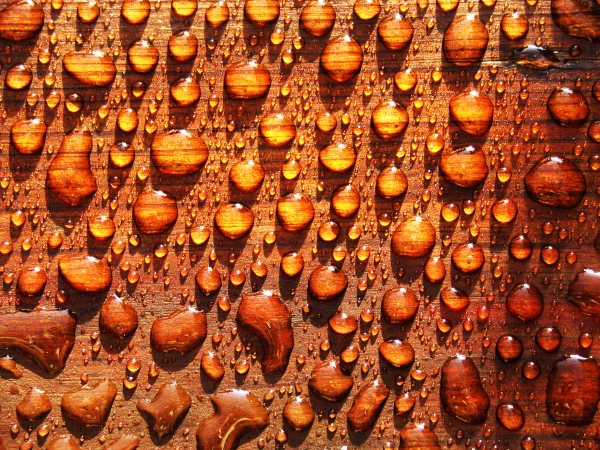Waterproofing Exterior Wood Products:
Building a wood deck can be expensive, so its important how you seal and maintain your deck or any exterior wood product. It will make an immense difference in whether the product will look great and last a long time, or whether you’ll be replacing it sooner than planned.
Wood Waterproofer Options:
There are many options on the market when it comes to waterproofing exterior wood finishes. Depending on the type of surface you are trying to waterproof, some options may work better than others; for example solid wood stains will provide a longer lasting protection on highly trafficked areas than clear wood protectant will. Typically the rule is, the more pigment in the wood protectant, sealant or stain of your choice, the longer the coat will last between applications. Although the clear protectants may bring out the natural finish of the wood, its transparency works against its durability due to the suns’ UV rays not being reflected by the protectant but rather being absorbed. This causes the protectant to break down prematurely and requires recoating to restore protection. Below is a quick summary of generally accepted lifespans of commonly used sealants, stains and protectants:
Clear Coat Waterproofers: Allow for the grain and color of the wood to be highlighted / shown off. Expected life span is 1-2 years.
Tinted Waterproofers: Allow for the grain and color of the wood to be show off while adding some color. Expected life span is 2-3 years.
Wood Oils: Allow for the grain and color to be accentuated and highlighted. Expected life span is 3+ years
Semi-Transparent wood Stains: Allow for some grain and color of the wood to be show off while coloring the wood. Expected life span is 3-5 years
Solid wood Stains: Completely seals and covers the wood with color. Expected life span 5+ years.
Water Based Waterproofers vs. Oil/Solvent Waterproofers:
When choosing between wood waterproofers there are several options to consider. Water based waterproofers and oil/solvent based waterproofers are two of the most commonly used waterproofers on the market today. There are also pure oil waterproofers that are less commonly used but work just as well. Water based waterproofers are easier to clean and can be applied to damp or freshly sawed wood. Oil based waterproofers require the wood surface to be completely dry. Oil based waterproofers penetrate the wood surface deeper and therefore can last longer than other products. Although oil based products last longer, they show their age more quickly than water based products because they are less flexible and will show signs of cracking and flaking. Pure oil products such as pressed oils, have the benefits of oil based waterproofers, but will not crack or flake. Instead they will fade over time as they are broken down more easily by the suns’ UV rays and therefore require recoating sooner than oil based stains.
Moisture Protection and Waterproofers:
Not all waterproofers are created equal. Although many carry the label “waterproofer” it does not necessarily mean they will protect against water damage. Water beading is a phenomenon that is characteristic to many waterproofers and is associated with the effectiveness of water repealing. Just because the wood surface is beading water, does not mean that the surface is waterproof and no water is penetrating the wood grain. Many wood coating products contain water beading agents to help protect the wood form water penetration, but few truly create a seal that can lock out moisture. Oil based wood products can do a great job at repealing water and protecting the wood grain deep below the surface. Oils can penetrate the wood deeply into the wood grain unlike surface coating product such as protectants, creating a thicker layer of protection from water intrusion, but by no means are oil protectants perfect. Because pure oils are a natural product they are broken down by the UV rays faster that stains and somewhat slower than protectants and need to be reapplied about every three years. Wood oil products bring out the natural beauty of wood without covering up the natural grain and create comparable layer of protection as waterproofers and wood stains do. When it comes to water beading all products are very comparable, but when taking a closer look, oil product will do a better job in protecting the wood from within than waterbased products may.










1 thought on “Waterproofing Exterior Wood Products”
Waterproofing of the exterior products is quite essential. Wood products which usually gets damaged are to kept in cover. Like we can use deck oil or wood oil to protect the upper surface of the wood.
Comments are closed.